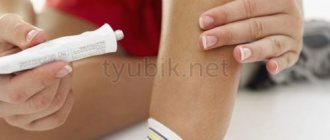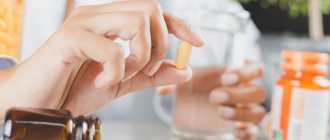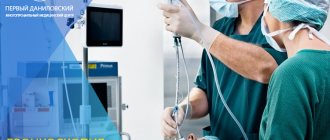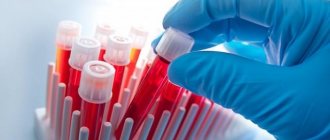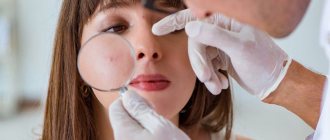How to treat lymphostasis of the lower extremities?
Lymphostasis of the lower extremities (lymphedema of the legs, lymphatic edema of the legs) is a disease of the lymphatic system, characterized by impaired lymph circulation and pathological retention of lymph in the tissues.
According to WHO statistics, lymphostasis is currently diagnosed in 10% of the population of our planet. The progression of this pathology to the development of elephantiasis causes physical and psychological suffering for the patient and almost always leads to disability. That is why the prevention and treatment of lymphostasis is currently receiving increased attention from phlebologists and lymphologists around the world.
What it is?
Lymphostasis is a lesion of the entire lymphatic system and a violation of the outflow of lymph. It simply stops circulating and accumulates in the tissues. This is why the legs swell a lot, and the skin becomes very dense over time. The problem does not go away on its own and develops into a more serious form, when a person can hardly move due to severe thickening of the legs.
This phenomenon is popularly called elephantiasis due to its external similarity to the limbs of this animal. Similar stagnation of lymph can develop on one leg or two, and can also affect the arms. From an aesthetic point of view, such a sight is very unpleasant, and it is quite difficult to hide it. On the Internet you can see photos showing examples of this disease.
How to prevent lymphedema of the arm after mastectomy?
After the operation, the doctor will give you some recommendations:
- Avoid any damage or scratching of the arm on the side where the lymph nodes were removed. If an infection gets into the wound, it can cause lymph stagnation.
- Carefully monitor the condition of your fingers and nails.
- Wear rubber gloves when doing housework.
- Treat any wounds, scratches, or abrasions immediately with an antiseptic.
- Do not inject medications into this arm.
- Do not measure blood pressure on it. The cuff compresses the blood and lymphatic vessels, which can also cause lymphostasis.
- Try to use your hand more on the side of the removed lymph nodes so that it moves more. This will improve lymph flow.
- When sleeping, give your arm an elevated position, and during the day you can bandage it with an elastic bandage.
An effective means of preventing lymphostasis is lymphopressotherapy and gentle manual techniques. Make an appointment with a specialist at the ProfMedLab clinic +7 (495) 120-08-07
Causes of lymphostasis
The development of lymphostasis can be caused by a number of factors, if excluded, the development of the pathological process can be prevented or lead to persistent regression.
Among the main ones are:
- amniotic constriction of blood vessels;
- heart pathologies;
- congenital pathologies of the lymphatic system;
- small diametric parameters of vascular lumens;
- tumors of various origins;
- inflammatory diseases of the skin of the legs;
- hypoalbuminemia (protein deficiency);
- chronic or acute venous insufficiency;
- fractures or dislocations;
- renal failure (stage of replacement therapy);
- removal of nodes of the lymphatic system;
- various parasitic infestations;
- surgery in the chest area (for example, mastectomy);
- prolonged immobilization.
The causes of the development of the disease may not have a direct connection with the lymphatic system, but indirectly have a pathological effect through adjacent organs or systems.
Cause of edema No. 1 - edema as a result of local inflammation
Inflammation is a normal reaction of the body. This is an immunological protective reaction against injury or damage, infection, allergy. Inflammation is accompanied by the release of chemicals into the tissue: proteins and cytokines, which increase local blood flow and increase the migration of white blood cells (leukocytes, lymphocytes, neutrophils) to the lesion. Thus, during inflammation, exudation occurs - the release of the liquid part of the blood through the vascular wall with formed elements into the tissue to respond to the cause of inflammation.
There can be many causes of local inflammation:
- injuries
- insect bites
- infectious lesion (including streptococcal erysipelas)
- Frequent hair removal of the legs, pubic area or armpits
- burns
The circulatory system is responsible for the delivery of oxygen, necessary substances and leukocytes to the site of damage. Biochemical reactions occur at the site of damage, resulting in the formation of other elements that must be removed only through the lymphatic system.
If the lymphatic system cannot cope, swelling of the legs after a fracture, other injuries, joint operations, swelling after a burn or a sting of an ordinary bee will persist for a long time. If acute inflammation progresses to chronic inflammation, the functionality of the lymphatic system may continue to decline, resulting in an increase in the size of the leg or arm due to swelling, heaviness and pain associated with the swelling itself.
Symptoms of lymphostasis, photo
Each stage of lymphostasis of the lower extremities has its own symptoms (see photo).
There are three levels of development of pathology:
- Mild swelling (lymphedema). Swelling is regular, goes away in the morning, after rest, increases with physical activity. The connective tissues do not grow, the skin is pale, easily palpable, and forms a fold upon palpation. In cold weather it may disappear completely. There are no irreversible changes at this stage.
- Irreversible swelling (fibridema). The swelling does not go away, pain appears, the skin is tight, a trace of pressure remains on palpation, the legs get tired easily. At the site of the lesions, cramps occur, the skin does not fold, and the skin gradually darkens.
- Elephantiasis. The connective tissue under the skin grows greatly, the skin is bluish, rough, and stretched. The swelling hurts a lot, the leg resembles an elephant’s limb, thickening more and more. Ulcers, necrotic processes, and inflammation appear. The limb gradually becomes more and more deformed, the joints do not bend.
Lymphostasis of the legs can develop primarily or secondary. Primary lymphedema is characterized by malfunctions of the lymphatic system caused by congenital malformations of the lymphatic tract and affects either one or both limbs. Primary manifestations of lymphostasis appear in childhood and progress in the future.
Secondary lymphostasis develops as a result of injury to the legs or the development of acquired diseases of the initially correctly formed lymphatic system.
Stages of lymphedema
Stage 0 – lymphatic vessels are damaged, but there is no swelling yet due to the body’s compensatory mechanisms
Stage 1 – transient mild swelling that occurs gradually throughout the day. When pressed with a finger, a hole is formed
Stage 2 – the skin begins to thicken (fibrosis), it is not always possible to make a dimple in the skin, the swelling is significant and dense, does not go away after rest
Stage 3 – severe swelling and skin changes
(Clinical classification of lymphedema, International Society of Lymphology)
Diagnostics
When determining therapeutic tactics, it is advisable to conduct an extensive examination of the patient, which includes:
- The most reliable method for diagnosing lymph transport disorders in the lower extremities is MRI (magnetic resonance imaging);
- Ultrasound (ultrasound examination) of the pelvic organs and the entire abdominal cavity;
- Duplex scanning of blood vessels of the arms and legs;
- Ultrasound of the heart, ECG;
- BAC (biochemical blood test) with mandatory determination of proteins and liver enzymes (AlT, AsT);
- X-ray examination (lymphography);
- Radioisotope diagnostics (lymphoscintigraphy);
- UMC (general urinalysis).
Most likely, all these diagnostic measures will not only indicate the development of lymphatic edema, but will also find the cause of these disorders.
Treatment of lymphostasis of the lower extremities
All conservative treatment methods are used only at the first stage of the disease, when structural changes in the connective tissue and skin have not yet begun. How lymphostasis will be treated directly depends on what caused it. First of all, the etiological factor must be eliminated (for example, if there is a pelvic tumor that compresses the lymph vessels, its removal is required).
Basic recommendations for patients with this pathology:
- cut nails carefully and promptly;
- When performing a massage, do not resort to kneading techniques;
- you should not wear shoes with laces or heels (heels increase the load on the legs and thereby impair lymph flow, and lacing can tighten soft blood vessels and tissues, which will also affect the development of this disease);
- It is strictly forbidden to visit a sauna, bathhouse or sunbathe (heat exposure dilates blood vessels, including lymphatic ones, which negatively affects lymph and blood flow in the lower extremities);
- treat the slightest skin damage (including insect bites) with antiseptic solutions;
- avoid static loads and heavy lifting (prolonged sitting or standing);
- you can’t sit cross-legged, which, by the way, is every woman’s favorite position, because this way you impede blood and lymph flow in the pelvic organs and legs;
- give up tight-fitting clothes and tight underwear (first of all, they compress the lymph nodes, and skin friction leads to trophic disorders);
- use special oils when taking a bath, and after water procedures, be sure to wipe the skin of your feet with lotions and creams without preservatives and fragrances, which will not only protect it, but also soften it, having a positive effect on the protective barrier;
- it is forbidden to walk barefoot outside the house (there is a high probability that the skin of the feet will be damaged and ulcers will form that will not heal well);
- use powder (baby powder, talc) for severe sweating of the feet, which reduces the risk of developing trophic disorders and sweating).
Treatment of lymphedema at home should be comprehensive, including medication and compression therapy, special massage, careful foot care, diet, sports and therapeutic exercises.
- The diet for lymphostasis should be low-calorie and practically salt-free, since salt, which retains fluid in the body, only contributes to the progression of edema. The food of patients with lymphostasis should be rich in plant and animal proteins, polyunsaturated fatty acids. You should limit your consumption of sweets, baked goods, pasta, and some types of cereals. But the consumption of fresh fruits, vegetables and dairy products is only welcome.
- Drug treatment consists of taking tablets. Taking troxevasin, detralex and venoruton forte tablets will help normalize lymph circulation. To improve peripheral blood circulation, no-shpu and teonicol are prescribed. The medicine trental will help restore blood microcirculation.
- For lymphostasis, sessions of lymphatic drainage massage are required, combining deep massage of the lymph nodes with rhythmic and gentle stroking of the outer skin. After the massage, which lasts about an hour, it is recommended to apply a therapeutic bandage.
- Compression therapy comes down to wearing special compression garments with distributed pressure or regular bandaging of the affected limbs. For dressings, you can use an elastic bandage or special products made from medical knitwear. By promoting lymphatic drainage, these measures help to significantly reduce swelling.
- Patients with lymphostasis benefit from physical therapy sessions, swimming and Nordic walking.
For varicose veins
Varicose veins are a leg disease characterized by swelling, pain in the limbs, and the appearance of spider veins.
There are three stages of this disease:
- the first is the appearance of slight swelling, heaviness in the legs after a hard day, pain in the lower leg area;
- the second is increased pain and swelling, the appearance of a vascular network, especially noticeable under the knees, where the skin is thinnest;
- third - large veins begin to appear outward, lumps and knots appear, the legs swell and constantly hurt.
Lymphatic drainage is allowed in the first and second stages. You can carry out the procedure yourself if there are initial signs of varicose veins; other cases require specialist supervision.
The session begins by applying a special venotonic cream to the skin, which will not only provide easy gliding, but will also have a therapeutic effect: strengthen the walls of the veins, improve blood circulation, and relieve swelling.
Technique:
- Light stroking movements in the direction of lymphatic flow (from bottom to top), warming the skin and increasing blood circulation.
- Kneading the tissues with a gradual increase in the load on the muscles. The movements are smooth; sharpness can provoke vasospasm.
- Light patting movements that relax and complete the massage procedure.
Course of therapy: duration 30 minutes for 2 weeks. Then you need to take a break for 4 weeks, after which you can repeat the procedure.
Drugs for lymphostasis
It is worth noting that drug treatment for lymphostasis of the legs contains a wide range of drugs that normalize lymph and blood flow, reduce the permeability of the walls of blood vessels, and also help increase their elasticity:
- diuretics - prescribed with caution under the supervision of a physician;
- antiplatelet agents (thin the blood) - trental, chimes;
- enzyme preparations (wobenzym, phlogenzyme) - stimulate the immune system, fight swelling, have an anti-inflammatory and fibrinolytic effect;
- phlebotropic agents (detralex, troxevasin and troxerutin gel) – improve tissue microcirculation, increase vein tone, restore lymph flow;
- homeopathic remedy - lymphomiazot, which stimulates metabolism, improves lymphatic drainage and enhances the removal of toxins from the body;
- benzopyrones (coumarin) – reduce high-protein edema, thin the blood, activate proteolysis by activating macrophages; Calcium dobesilate, which is similar in action to benzopyrones, is also prescribed;
- angioprotectors (medicines from horse chestnut extract) – normalize the tone of lymphatic vessels and veins, reduce the permeability of the vascular wall, which reduces the intensity of edema (escusan, venitan, aescin);
- solcoseryl - reduces tissue swelling, has a regenerative effect, increases the tone of the vascular wall (stimulates the formation of collagen in the walls of blood vessels);
- antihistamines - recommended for relapses of erysipelas and suppress the inhibitory effect of histamine on the contractile activity of lymph vessels (see all antihistamines);
- immunomodulators (succinic acid, tincture of Eleutherococcus, lycopid) – stimulate the immune system, strengthen the vascular wall;
- antibiotics and anti-inflammatory drugs for trophic skin disorders (ulcers, eczema, erysipelas);
- vitamins (ascorbic acid, vitamin E, PP, P) – strengthen the vascular wall, reduce vascular permeability, and have an antioxidant effect.
Microcurrents
Hardware lymphatic drainage with microcurrents is a superficial procedure. Light electrical impulses affect the lymphatic vessels, evenly squeezing them, which has a beneficial effect on the movement of lymph.
The procedure also causes muscles to contract, which helps tighten the skin and restore their tone. In addition, microcurrents affect the nervous and other systems of the body, healing them.
Advantages of this procedure:
- suitable for thin and sensitive skin;
- trains small vessels and capillaries;
- smoothes and moisturizes the epidermis;
- has a calming effect.
Microcurrent massage has additional contraindications:
- presence of a pacemaker;
- heart diseases;
- suffering a heart attack or stroke;
- the presence of metal implants in the problem area.
The essence of microcurrent massage: the working area is lubricated with a special gel that allows electrical impulses to be carried out, and two electrodes are installed - with positive and negative charges. The first remains in place, and the second moves in the direction of the lymphatic flow.
For therapeutic purposes, medications are additionally applied to the problem area, which, under the influence of microcurrents, penetrate into the deep layers of the epidermis.
The session lasts 10–15 minutes. The number of procedures is determined by a specialist, but there cannot be less than 5.
Compression underwear
Medical knitwear is a salvation for patients with pathologies of the blood circulation and lymphatic system.
The products have a number of advantages:
- Functionality. Treatment of lymphedema is effectively carried out using medical knitwear. Stockings, socks, and sleeves not only delicately compress the affected, enlarged areas of lymphatic or blood vessels, but also provide support for the limb.
- Convenience. It is unlikely that everyone has the skills to bandage with an elastic bandage or the basics of lymphatic drainage massage. And anyone can wear compression hosiery (stockings, sleeves, knee socks).
- Beauty. Treating lymphedema and swelling can be fashionable and stylish. The knitwear is made in different colors and stylish designs. It can be worn instead of regular underwear under regular clothes.
It is necessary to choose therapeutic knitwear only according to individual standards. They are removed by a surgeon or medical consultant. For a positive effect against congestion, swelling, long-term use, wash your stockings or sleeves daily.
Lymphatic drainage massage of the legs during pregnancy
While waiting for a baby, it is the legs that experience quite a lot of stress, swelling and heaviness appear, and cramps often occur. Lymphatic drainage massage will help solve these problems.
It is allowed for expectant mothers from the second trimester until childbirth in the absence of the following contraindications:
- increased blood pressure;
- toxicosis;
- uterine hypertonicity/threat of miscarriage;
- severe varicose veins, thrombosis;
- heart disease;
- infectious skin lesions;
- general malaise, elevated body temperature.
Before the massage, the skin of the feet must be prepared: slightly warm the limbs with a warm shower or rubbing, apply natural oil - olive, apricot, almond.
Take a comfortable position with your feet at eye level. The massage begins with light stroking of the limbs, then the movements become more intense with slight pressure on the skin, and the session also ends with light stroking. Massage the legs from the heels to the kneecap, repeating the cycle 5 to 10 times, while reaching the knees, lower the arms down again and repeat all the movements again.
Result:
- swelling goes away;
- the body is cleansed;
- blood circulation improves;
- there is no heaviness in the legs (even in late pregnancy).
Please note that if the condition worsens, pain in the legs or nausea occurs, you must stop performing the procedure.
Lymphatic drainage massage will improve your legs and help prevent the development of various diseases. You can perform it at home using a manual method or in a salon using a hardware method, the main thing is to follow the technique and not overdo it.
Article design: Mila Friedan
Massage
For lymphostasis, this is the basis of treatment. Hardware and manual effects on deep layers and large blood vessels are equally effective. You will not be able to massage your arm or leg yourself if there is swelling. The treatment of stagnation begins from the groin area or armpit area, which is physically difficult for the patient to do on his own. If you are prone to accumulation of lymph and interstitial fluid, or swelling, take a massage course from a specialist.
After the first session, after 1 hour, you will notice that the affected limb has decreased in size, and pleasant “goosebumps” and tingling may run through your body. This is a signal that stagnation of fluid and lymph, swelling is subsiding. During the session, the massage therapist wraps a ring of fingers around the arm or leg, slowly warms it up and works the deep layers of tissue. Lymphostasis of the lower extremities or arms can be treated with a massage brush or roller. And strengthen the blood vessels, and remove stagnation and swelling. Areas with large varicose nodes, trophic ulcers and other violations of the integrity of the skin are bypassed. If discomfort appears during the session, the session is stopped.
Lymphatic drainage massage with oil and honey
Lymphatic drainage massage with honey will help improve blood circulation, smooth and tighten the skin. The natural ingredient will nourish the epidermis with beneficial substances and, at the same time, eliminate toxins and harmful elements.
For massage, you need to take fresh honey of any kind and mix it with your favorite aroma oil at the rate of 1 tsp. sweet ingredient + 5 drops. oils
Please note that the mixture is prepared immediately before the session.
The honey-oil mixture is applied to problem areas with light patting movements. Then the movements become more intense: the palms are pressed tightly against the skin and abruptly torn off. The massage is continued until a whitish coating appears on the hands; in time equivalent, this takes from 5 to 10 minutes.
After the procedure, the remnants of the honey-oil mixture are washed off with warm water, and the skin is lubricated with a suitable cosmetic product. Number of sessions – 15 over 30 days.
About the benefits of exercise therapy
In addition to massage, physical exercise is very important for lymphostasis of the lower extremities. They are included in the treatment of this disease. Of course, it is necessary to develop a special complex that needs to be done 2 times a day. You should devote only a quarter of an hour to classes. In this case, a compression bandage must be present on the sore leg.
What exercises can be included in the complex?
- Bicycle with a sore leg;
- Flexion and straightening of toes;
- Rotate your feet in different directions alternately;
- “Drawing” a figure of eight with your feet.
The exercises are very easy, but the important rule is to do them daily.
Pressotherapy
Pressotherapy refers to deep types of lymphatic drainage, in which the effect on lymph occurs by creating high external pressure on the lower extremities.
Massage is indicated to solve the following problems:
- phlebeurysm;
- swelling of the legs;
- overweight;
- cellulite.
Benefits of pressotherapy:
- safety and painlessness of the procedure;
- gentle effect on the skin;
- minimum contraindications.
The massage is carried out using a special suit, which is high boots or pants made of thick fabric, into which compressed air is supplied. The intensity of pressure is regulated by a computer program, which allows you to select individual indicators taking into account the characteristics of the disease.
The pressure generated affects the toxins and wastes present in the body. Once in the lymph, they are dispersed through the bloodstream, thereby cleansing the vessels and tissues.
Number of procedures – 10–15. It is recommended to perform them every other day; sessions can last up to six months.
Treatment with folk remedies
At home, various folk remedies are used to treat lymphostasis (as an auxiliary medication and only in the initial stages). Without being able to describe them all, here are a few examples:
- Apple vinegar. It strengthens the walls of blood vessels, eliminates swelling and trophic changes. To grind, dilute vinegar with water in a ratio of 1:2. Rub with massage movements from feet to thighs. Then, after a short exposure, rinse off the remaining solution and apply a cream with a vascular strengthening effect to the skin.
- Compresses help a lot. For example, baked onions mixed with pharmaceutical tar. The onion is baked, ground until smooth and 2-3 spoons of tar are added. The finished mixture is laid out on a clean canvas cloth. The tissue is evenly distributed over the area of local swelling, fixed with a bandage and left until the morning.
- Dandelion root – the product enhances lymphatic drainage and tones the vascular wall. Use an infusion of dandelion leaves, taking 0.5 cups on an empty stomach three times a day. To prepare the infusion you will need 2 tbsp. spoons of dry dandelion leaves, they need to be filled with 0.5 liters in the evening. boiled water. Drink the finished infusion throughout the next day, and prepare a fresh portion in the evening. You can also use dandelion roots, but they should be boiled in a water bath for 5-8 minutes. in the same volume of water. Drink a glass of the prepared decoction in the morning before meals.
- Decoctions of medicinal herbs can be used in the form of night applications. For herbs, take St. John's wort, plantain, and yarrow. Add 25 ml of medical alcohol, an aspirin tablet and an ampiox tablet to the prepared solution. I soak gauze with the composition and apply it to the affected area of skin, put a cloth soaked in a strong salt solution on top and securely fix it with a bandage, leaving it overnight.
- Natural herbs that have a diuretic effect have a therapeutic effect, helping to quickly eliminate swelling of the legs. Mix a collection of nettle leaves, birch buds and rose hips in equal parts and simmer in a water bath for 10-15 minutes. After filtering the infusion, drink half a glass three times a day 30 minutes before meals.
- Traditional medicine has not avoided the active use of leeches. For mild swelling, you can use 2-3 leeches per session. In more advanced cases, the number of leeches can be increased to 7-8 pieces. During the week you can do two treatment courses. Hirudin, contained in leeches, not only thins the blood perfectly, but also strengthens the vascular wall, reducing the effusion of fluid into the tissue and, as a result, significantly reduces swelling of the legs.
In addition, we should not forget about other recommendations from doctors to patients who are developing or experiencing similar problems. They will have to avoid baths, saunas, solariums, fragrances and preservatives in foot cosmetics, give up high-heeled shoes, tight clothes that rub the skin, avoid heavy lifting, long standing or sitting (especially with one leg crossed).
Symptoms of leg swelling - heaviness and pain
The presence of excess fluid in tissues provokes inflammation and irritates nerve endings, causing pain, as well as receptors (proprioceptors) of muscles, tendons, and bones, which leads to a feeling of fullness and heaviness in the limb.
Changes in pressure disrupt homeostasis, and tissues may lack oxygen and microelements, which can also cause pain.
This is how, with edema, physical and biochemical effects occur, causing pain and discomfort.
Operation
The issue of surgical treatment is considered in cases of severe congenital pathology of the lymphatic system, lack of effect from conservative therapy, progression of lymphedema, soft tissue fibrosis, frequent episodes of erysipelas, etc.
Types of surgical intervention:
- Dermatofasciolipectomy using the island method – removal of altered areas of skin along with subcutaneous fat, fascia, and fibrosis. Preoperative preparation includes several liposuction sessions necessary to remove subcutaneous tissue. The surgical intervention consists of excision of certain areas of the skin with underlying tissues affected by fibrosis. The resulting wound surface is covered with preserved skin flaps or taken from a healthy area of the patient’s skin.
- Tunneling is the artificial creation of special channels in the affected areas for the outflow of accumulated lymph into healthy tissues with further absorption into the lymphatic vessels. Temporary tunnels are made from spiral-shaped drainages or special prostheses, permanent tunnels are made from a section of the saphenous vein or a spiral made of inert material. Indicated for advanced forms of lymphedema, which excludes the possibility of treatment with any of the above methods.
- Operation with the creation of lymphovenous anastomoses. Indicated for secondary lymphostasis, especially after radiation exposure to the lymph nodes or after their removal during mastectomy. It is ineffective for the treatment of primary lymphostasis. The intervention consists of isolating the vessels of the lymphatic bed and connecting them with a nearby vein using the finest microanastomoses.
- Liposuction is the surgical aspiration removal of subcutaneous tissue that has undergone fibrotic changes. It is performed in the presence of moderate limited fibrosis.
After any type of surgical intervention, drug treatment is prescribed. Every patient with lymphostasis, regardless of the stage of the process, is observed by an angiosurgeon. Courses of maintenance therapy in most cases are carried out throughout the patient’s life.
Diet
Depending on the cause of leg lymphostasis, the doctor prepares a diet. The basic nutritional rules for patients with lymphostasis are:
- avoiding alcohol and caffeinated drinks;
- exclusion of products containing dyes, artificial fillers and flavor enhancers;
- reducing salt intake;
- exclusion of products with excess animal fat content;
- preference is given to foods rich in proteins and fiber;
- maintaining water balance;
- fractional meals: small portions, but often.
Prevention
To prevent lymphostasis of the lower extremities, it is recommended to follow the following rules:
- wear compression garments;
- visit the pool regularly;
- give up uncomfortable shoes;
- drink at least two liters of clean water daily;
- take half-hour walks and bike rides every day;
- care for the skin of the feet: cutting nails, removing dead skin, treating wounds, treating insect bites with antiseptics or boric acid - everything should be done in a timely manner.
Stagnation in tissues and impaired outflow of lymphatic fluid will provoke the appearance of other serious diseases and limit movement. How to prevent the development of pathology? If lymphostasis of the lower extremities has already been diagnosed, treatment at home will help you quickly cope. The system of influencing risk factors should not be neglected in patients with a genetic predisposition or in remission.
Contraindications
According to doctors, the procedure cannot be performed in the following cases:
- the presence of open wounds, fresh scars at the site of exposure;
- vein thrombosis;
- oncology;
- diabetes;
- general malaise, fever.
